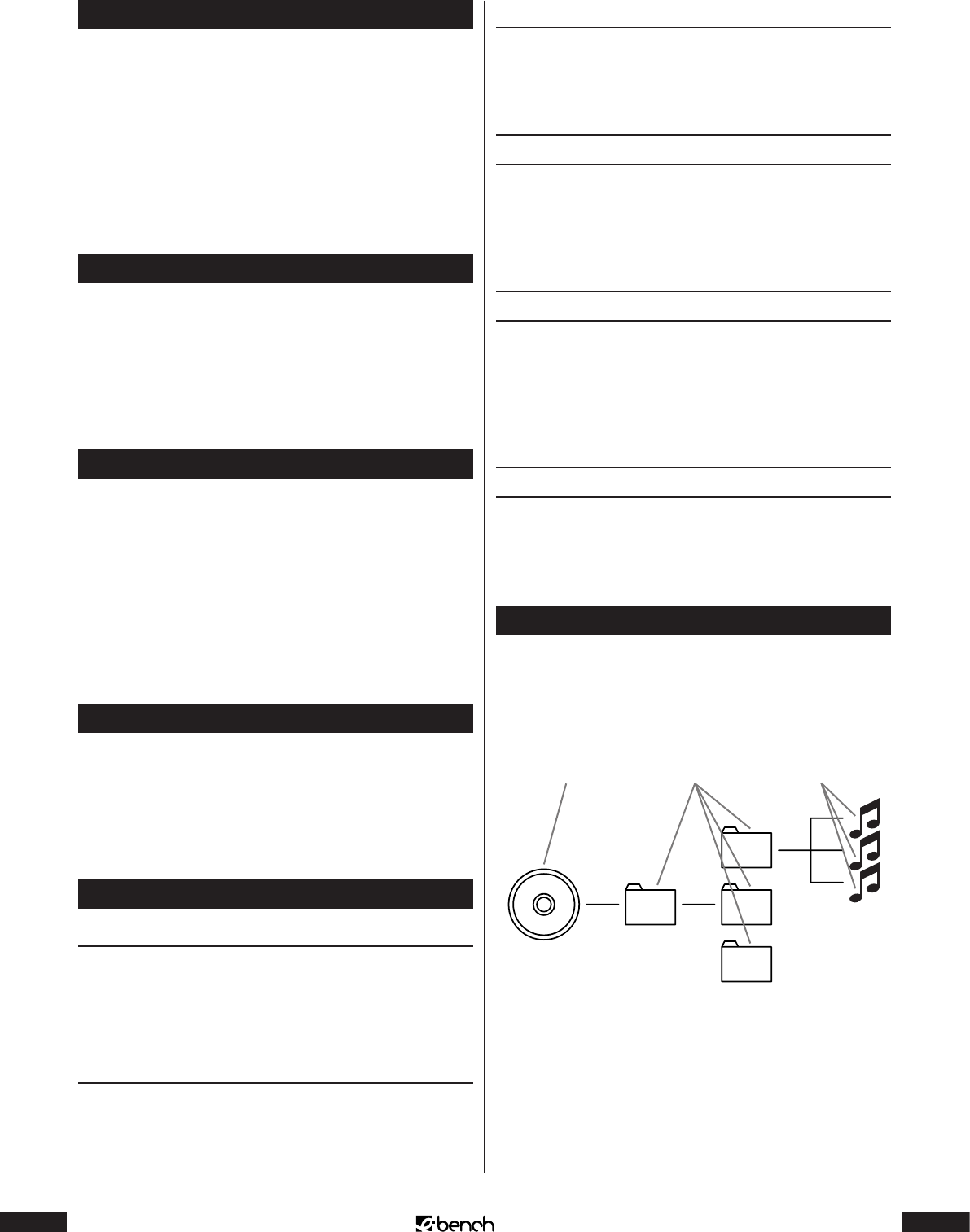
36
KH 2370
Decoder
The sound on DVDs with home cinema surround sound
is stored in a coded form on the DVD. There are dierent
coding formats for dierent purposes, e. g. AC-3 to play
Dolby Digital surround sound. To be able to play coded
sound, the playback unit (e. g. the combination unit) must
have a so-called decoder, which transforms the coded sig-
nals back into music or sound.
The eBench KH 2370 combination unit has an AC-3 decod-
er (for Dolby Digital 5.1 surround sound signals).
Dolby Surround
Dolby Surround is an analog sound format whereby the
two channels of a stereo sound signal are used to accom-
modate surround sound information for other channels.
With a Dolby Surround Decoder, the signals are trans-
formed back into sound or music and are conducted to
two additional loudspeakers, which are to be placed be-
hind the listening position.
Dolby Prologic
By comparison with the Dolby surround sound format,
in the case of Dolby Prologic a further channel is used in
the stereo signal; this is the so-called “Center” channel.
The corresponding center loudspeaker is to be placed in
the centre between the stereo loudspeakers. The lowest
tones are to be conducted to a low tone loudspeaker, the
so-called “subwoofer”. The subwoofer can be placed at any
position in the room; the reason for this is that the low
tones which are emitted by the subwoofer, can scarcely be
exactly located by the human ear.
Dolby Digital (5.1)
Dolby Digital, also called AC3, is a digital sound format, by
which up to six separate audio channels can be transport-
ed. In the case of most of the current DVDs, the sound is
stored in the so-called “Dolby Digital 5.1” format; the “5” in
the description “5.1” stands for three front and two back
surround sound channels, the “1” for the low tone channel.
What are PAL, NTSC and SECAM?
PAL
PAL is the abbreviation for Phase Alternation Line. PAL is
in Central and Western Europe (exception: France, see ab-
breviation SECAM), the normal and commonly used colour
television standard.
NTSC
NTSC is the abbreviation for National Television System
Committee. NTSC is a colour television standard which is
used, above all, in the USA and in Japan.
SECAM
SECAM is the abbreviation for the French “système en cou-
leur avec mémoire”. SECAM is the normal and most com-
monly used colour television standard in France and many
Eastern European countries.
Audio CDs
Audio CDs only contain audio data; these are also availa-
ble with 8 cm and 12 cm (diameter) formats. The playback
duration of the audio data stored on them is 20 minutes
(8 cm format) and 74 minutes (12 cm format) respectively.
Audio data with CDA format are stored on audio CDs.
MP
MP3 describes a procedure or format to compress audio
data developed by the Fraunhofer Institut. Pieces of music
compressed in MP3 format only have a fraction of their
original size, which allows far more music to be stored e.
g. on CD-Rs/CD-RWs than on normal audio CDs, on which
audio data is stored in CDA format.
JPEG
JPEG (abbreviation of Joint Photographics Expert Group)
describes a commonly used graphic format developed by
the same named organisation, with which picture data in
coloured and grey tones is compressed.
What are folders?
In contrast to audio CDs, the titles of a CD-R/CD-RW with
MP3 or JPEG les can be stored in folders, for example, to
organize titles from dierent genres. If the MP3 les were
stored in folders, then the structure of an MP3 CD can look
like the following, for example:
MP3 CD Folder MP3 les


















